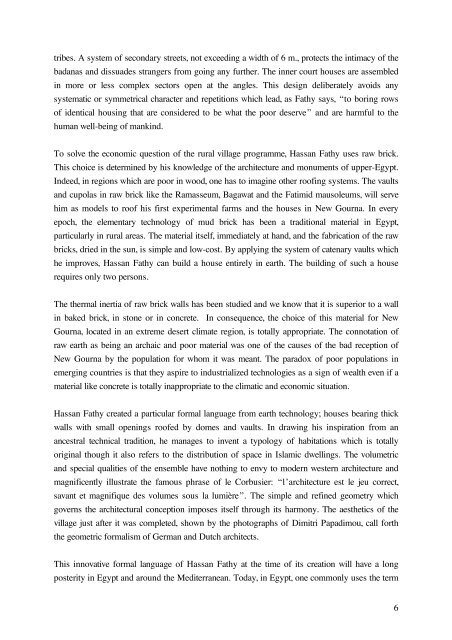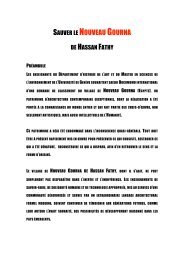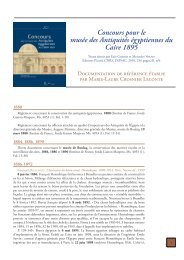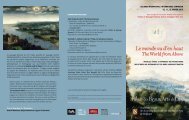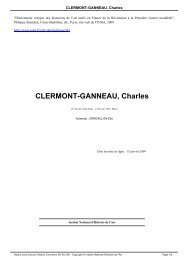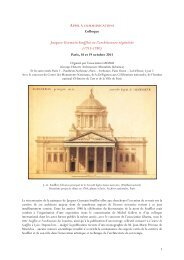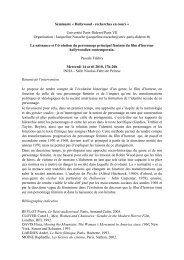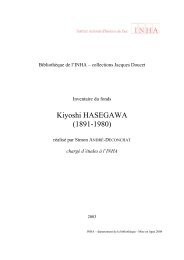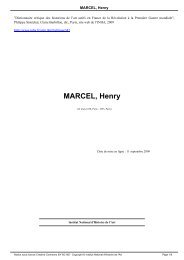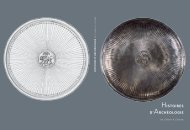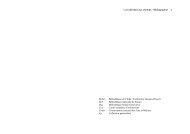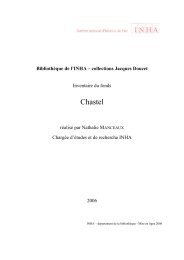Create successful ePaper yourself
Turn your PDF publications into a flip-book with our unique Google optimized e-Paper software.
tribes. A system of secondary streets, not exceeding a width of 6 m., protects the intimacy of the<br />
badanas and dissuades strangers from going any further. The inner court houses are assembled<br />
in more or less complex sectors open at the angles. This design deliberately avoids any<br />
systematic or symmetrical character and repetitions which lead, as Fathy says, “to boring rows<br />
of identical housing that are considered to be what the poor deserve” and are harmful to the<br />
human well-being of mankind.<br />
To solve the economic question of the rural village programme, Hassan Fathy uses raw brick.<br />
This choice is determined by his knowledge of the architecture and monuments of upper-Egypt.<br />
Indeed, in regions which are poor in wood, one has to imagine other roofing systems. The vaults<br />
and cupolas in raw brick like the Ramasseum, Bagawat and the Fatimid mausoleums, will serve<br />
him as models to roof his first experimental farms and the houses in <strong>New</strong> <strong>Gourna</strong>. In every<br />
epoch, the elementary technology of mud brick has been a traditional material in Egypt,<br />
particularly in rural areas. The material itself, immediately at hand, and the fabrication of the raw<br />
bricks, dried in the sun, is simple and low-cost. By applying the system of catenary vaults which<br />
he improves, Hassan Fathy can build a house entirely in earth. The building of such a house<br />
requires only two persons.<br />
The thermal inertia of raw brick walls has been studied and we know that it is superior to a wall<br />
in baked brick, in stone or in concrete. In consequence, the choice of this material for <strong>New</strong><br />
<strong>Gourna</strong>, located in an extreme desert climate region, is totally appropriate. The connotation of<br />
raw earth as being an archaic and poor material was one of the causes of the bad reception of<br />
<strong>New</strong> <strong>Gourna</strong> by the population for whom it was meant. The paradox of poor populations in<br />
emerging countries is that they aspire to industrialized technologies as a sign of wealth even if a<br />
material like concrete is totally inappropriate to the climatic and economic situation.<br />
Hassan Fathy created a particular formal language from earth technology; houses bearing thick<br />
walls with small openings roofed by domes and vaults. In drawing his inspiration from an<br />
ancestral technical tradition, he manages to invent a typology of habitations which is totally<br />
original though it also refers to the distribution of space in Islamic dwellings. The volumetric<br />
and special qualities of the ensemble have nothing to envy to modern western architecture and<br />
magnificently illustrate the famous phrase of le Corbusier: “l’architecture est le jeu correct,<br />
savant et magnifique des volumes sous la lumière”. The simple and refined geometry which<br />
governs the architectural conception imposes itself through its harmony. The aesthetics of the<br />
village just after it was completed, shown by the photographs of Dimitri Papadimou, call forth<br />
the geometric formalism of German and Dutch architects.<br />
This innovative formal language of Hassan Fathy at the time of its creation will have a long<br />
posterity in Egypt and around the Mediterranean. Today, in Egypt, one commonly uses the term<br />
6


